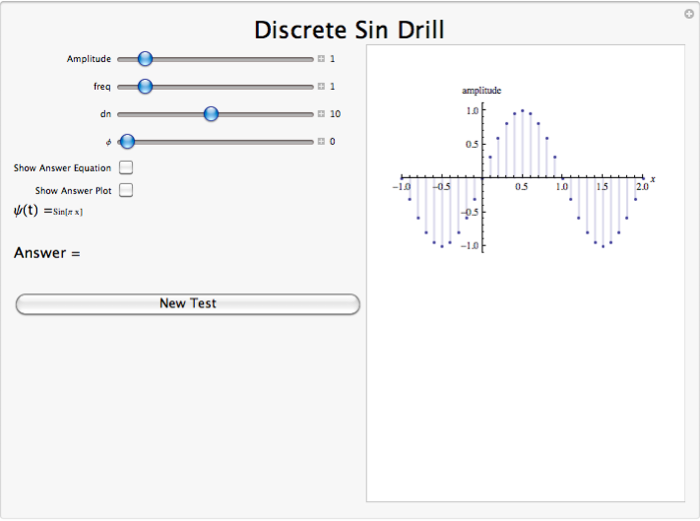7.1: Discrete Time Periodic Signals
- Page ID
- 22879
Introduction
This module describes the type of signals acted on by the Discrete Time Fourier Series.
Relevant Spaces
The Discrete Time Fourier Series maps finite-length (or \(N\)-periodic), discrete time signals in \(L^2\) to finite-length, discrete-frequency signals in \(l^2\).

Periodic signals in discrete time repeats themselves in each cycle. However, only integers are allowed as time variable in discrete time. We denote signals in such case as \(x[n]\), \(n=\ldots,-2,-1,0,1,2, \dots\)
Periodic Signals
When a function repeats itself exactly after some given period, or cycle, we say it's periodic. A periodic function can be mathematically defined as:
\[f[n]=f[n+m N] \forall m:(m \in \mathbb{Z}) \label{7.1} \]
where \(N > 0\) represents the fundamental period of the signal, which is the smallest positive value of N for the signal to repeat. Because of this, you may also see a signal referred to as an N-periodic signal. Any function that satisfies this equation is said to be periodic with period N. Here's an example of a discrete-time periodic signal with period N:
We can think of periodic functions (with period \(N\)) two different ways:
- as functions on all of \(\mathbb{R}\)

Figure \(\PageIndex{3}\): discrete time periodic function over all of \(\mathbb{R}\) where \(f[n_0]=f[n_0+N]\) - or, we can cut out all of the redundancy, and think of them as functions on an interval \([0,N]\) (or, more generally, \([a, a+N]\)). If we know the signal is N-periodic then all the information of the signal is captured by the above interval.

Figure \(\PageIndex{4}\): Remove the redundancy of the period function so that \(f[n]\) is undefined outside \([0,N]\).
An aperiodic DT function \(f[n]\) does not repeat for any \(N \in \mathbb{R}\); i.e. there exists no \(N\) such that Equation \ref{7.1} holds.
SinDrillDiscrete Demonstration
Here's an example demonstrating a periodic sinusoidal signal with various frequencies, amplitudes and phase delays:

Conclusion
A discrete periodic signal is completely defined by its values in one period, such as the interval [0,N].


